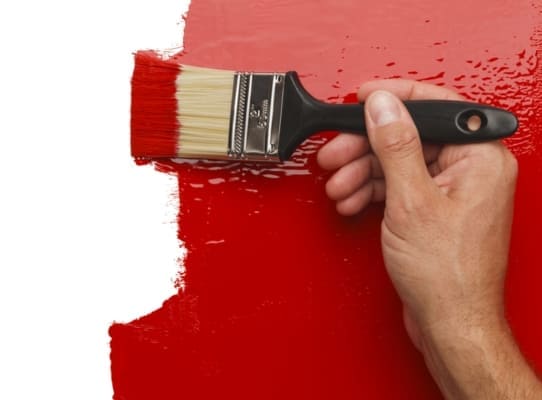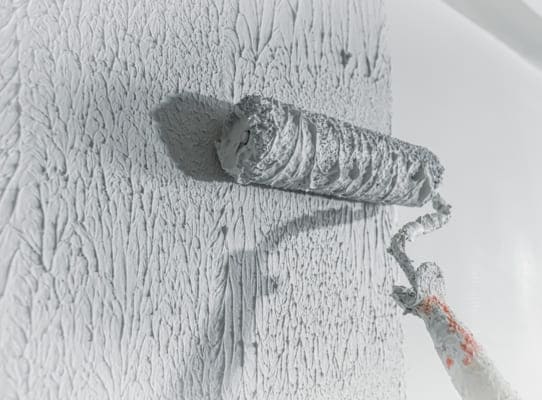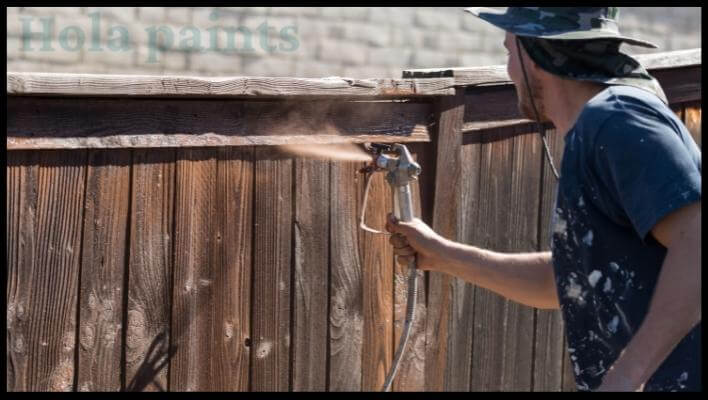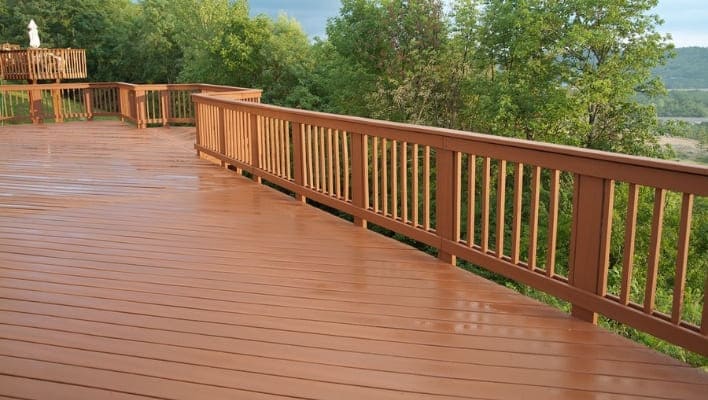When it comes to our homes and workplaces, we all want them to look their best. But, let’s face it, our walls and ceilings might end up with a few imperfections. Walls, in particular, is prone to dents and dings over time. While not every flaw requires a major fix, sometimes a fresh coat of paint can do wonders. Now, choosing the right paint for the job is key, especially when you want to hide wall imperfections with paint seamlessly.
Here’s the deal – Use Thick paint to cover imperfections on walls, ceilings, and exteriors. Unlike regular paint that might struggle to cover up those small flaws, thick paint does the job effortlessly. It’s got this dense, rich consistency that not only hides the dings but also fills in those little cracks, giving your space a flawless finish. So, when life leaves its marks on your walls, let thick paint for walls be your artistic shield, turning imperfections into a masterpiece of perfection.

Table of Contents
- How to hide wall imperfections with paint?
- Clean and Prepare the Wall
- Choose a Quality Paint
- Apply a Primer
- Color Paint: What color paint hides wall imperfections?
- Textured paint to hide imperfections
- How many coats of paint do I need to hide imperfections?
- Establish a Focal Point
- Strategically Place Furniture and Decor
- Regular Maintenance
- best paint color to hide imperfections
- Benjamin Moore
- Rust-Oleum
- Sherwin-Williams
- Behr
- Glidden’s White thick paint
- Valspar
- What paint finish hides imperfections?
- can you paint flat over gloss?
- How to paint flat over semi gloss without sanding?
- How to Clean Flat Paint on Walls?
- Gentle Dusting
- Soap and Water Solution
- Gentle Approach for Matte Paint
- Avoid Harsh Sponges
- Enhance Cleaning Mixture
- Repainting if Necessary
- Conclusion:
- Martina Hitchcock
How to hide wall imperfections with paint?
Here are some effective steps I’ve personally used to hide wall flaws with paint:
Clean and Prepare the Wall
Begin by thoroughly cleaning the wall to eliminate any dirt, grease or nicotine. Fill any visible cracks or holes with a suitable filler and sand the wall surface until it’s smooth.
Choose a Quality Paint
Choosing the right paint to hide wall imperfections is crucial for achieving a flawless look. Opting for flat paint with its matte finish and pigmented color is an excellent choice. Flat paint excels at concealing bumps and uneven surfaces by absorbing light and minimizing visibility.
Even if your walls have a glossy coat, you can switch to flat paint to effortlessly cover blemishes and provide a smooth appearance. When selecting paint, consider that glossy finishes tend to highlight imperfections, while flat finishes effectively hide them.
Apply a Primer
Before painting, use a primer. It enhances paint adhesion and smooths the surface, minimizing imperfections’ visibility.
Color Paint: What color paint hides wall imperfections?
Color is a critical factor when using thick paint to conceal wall imperfections. Lighter colors tend to highlight flaws, while darker hues effectively hide them. Lighter colors reflect more light, making imperfections more noticeable, whereas darker shades absorb light, reducing the contrast between highlights and shadows.
Selecting dark shade of flat paint, such as blues or greens, creates an optical illusion that camouflages imperfections. Although darker colors may make a room seem smaller, they excel at concealing blemishes, offering a practical compromise for those seeking both a brighter space and hidden flaws.
Textured paint to hide imperfections

Choosing textured paint is a practical way for users to enhance the aesthetics of their walls while minimizing imperfections. The textured surface not only adds depth but also introduces a visually appealing element, making it a versatile and pleasing option for those seeking an interesting and dynamic wall finish.
From a user’s perspective, the visibility of imperfections is a primary concern. Textured paint proves advantageous by effectively diminishing the prominence of flaws. The uneven surface disrupts light play, making it challenging for the eye to detect underlying irregularities. For users aiming for a polished appearance, textured paint offers a user-friendly solution to mask imperfections. This one is my favourite technique
Additionally, professional assistance is available for those less confident in their skills, ensuring optimal results and a seamless application that enhances overall aesthetic appeal. This user-centric approach recognizes potential challenges and provides a solution that aligns with users’ preferences and skill levels.
Helpful Resource: Learn the major differences between smooth and texture finish.
How many coats of paint do I need to hide imperfections?
When tackling a paint job, aim for two coats for the best outcome. However, you can apply a third coat, particularly when going from a dark to a lighter color. This extra layer can make a difference. So, plan accordingly by having enough paint or factoring it into your budget for professional services.
Establish a Focal Point
Among the various techniques I’ve tried, there’s one I absolutely adore. I like to design my room around a focal point, be it an accent wall or a piece of artwork. It makes a huge difference because it shifts attention away from any imperfections and adds a captivating visual element to the space.
Strategically Place Furniture and Decor
I strategically arrange furniture and decorations to hide or conceal problematic wall areas. This not only hides flaws but also elevates the room’s visual appeal.
Regular Maintenance
Stay vigilant with your painted walls and quickly address any new imperfections as they pop up. Taking this proactive approach helps you sidestep the necessity of a full repaint and guarantees that your walls consistently maintain a fresh and appealing appearance.
best paint color to hide imperfections
Numerous paint brands provide products specifically formulated to effectively conceal imperfections on walls. While personal preferences may differ, there are reputable best thick paint to cover imperfections and deliver a seamless finish.
Benjamin Moore
Benjamin Moore’s Aura and Regal Select lines are recognized for their high-quality formulations, offering a durable and flawless finish that effectively conceals imperfections on walls.
Rust-Oleum
Rust-Oleum’s Home Interior Wall Paint, with a flat finish, is a versatile latex paint suitable for brushing, rolling, or spraying (especially with wall paint sprayers) on various interior surfaces. It combines paint and primer, is washable, and low in odor. An extra primer is advised for surfaces like bare wood or dark colors. It works on drywall, wood, masonry, steel, and aluminum,
Sherwin-Williams
Sherwin-Williams’ Duration Home and SuperPaint are popular choices due to their stain resistance and exceptional coverage, making them well-suited for hiding flaws and providing a smooth finish.
Behr
Behr’s Premium Plus Ultra, serving as both paint and primer, is known for its excellent coverage, making it a preferred option for users aiming to conceal imperfections and achieve a smooth result.
Glidden’s White thick paint
Glidden’s Paint & Primer, in a flat finish, is durable and ideal for various interior surfaces. It offers excellent scrubbability, washability, and an all-in-one solution for great hide and coverage. While low in VOC, be cautious as adding colorants may increase VOC levels. Thorough stirring and following application instructions are key. Notably, Glidden Performance Edge colors make filled cracks and holes nearly invisible, unlike traditional spackle.
Valspar
Valspar Signature is acknowledged for its quality and versatility, available in various finishes to effectively hide imperfections and provide a flawless appearance on walls.
What paint finish hides imperfections?
Choose a matte or flat paint finish to effectively conceal imperfections on your walls. These low-sheen options absorb light, minimizing the visibility of flaws such as cracks and bumps. Matte finishes, in particular, excel at hiding damage, requiring fewer coats than glossier alternatives.
For a slightly higher sheen with some washability, consider low-luster finishes like eggshell and satin. Glossier finishes, such as semi-gloss and gloss, are durable but can highlight imperfections on the wall due to their reflective nature. In summary, opt for a flat finish for the best coverage and imperfection concealment.
can you paint flat over gloss?
It’s entirely feasible to use flat paint over semi-gloss paint with the right preparation. To achieve this, start by giving the wall’s surface some texture using 80-150 grit sandpaper, working your way from top to bottom until the shiny quality of the semi-gloss diminishes.
Note: When switching from a glossy to a flat surface, sanding may not be required if the glossy surface is in good condition and properly cleaned.
After sanding, clear away dust and debris with a vacuum. Applying a white primer over the existing semi-gloss paint is a crucial step, creating a solid foundation for the matte paint to adhere to. If the original semi-gloss had a darker shade, be prepared to apply multiple coats of primer to prep the surface.
Once the primer is in place, coat the wall evenly with flat paint using a roller or brush. Ensure each coat dries completely before applying the next one, and you’ll attain a refreshed matte look on your wall.
How to paint flat over semi gloss without sanding?
Preparing the wall for a matte paint coat without sanding is achievable by using a liquid deglosser to eliminate the sheen from semi-gloss paint. Apply the deglosser generously on a clean rag and rub it on the wall using circular motions until the semi-gloss loses its shine. Allow the deglosser to sit for approximately 10 minutes before applying another coat or priming.
Select a primer that matches the base of the existing semi-gloss paint. Apply it with a paint roller on flat surfaces or a paintbrush on textured walls. Following the primer, select a flat paint with a matching base, applying two coats for a refreshed matte appearance. Although it is technically possible to paint directly over gloss, it is not recommended due to the glossy surface’s inadequate adhesion, which can lead to potential chipping and a less durable finish.
How to Clean Flat Paint on Walls?
Here is the step by step guide on cleaning walls that have flat paint?
Gentle Dusting
To clean flat paint on walls with a matte finish, start by softly dusting the area with a soft, dry cloth to remove dirt and debris.
Soap and Water Solution
For stains or spots, use a mixture of mild detergent or dish soap with warm water on a damp cloth or sponge. Apply the soapy solution gently in a circular motion to address scuff marks.
Gentle Approach for Matte Paint
Remember, flat white paint requires a delicate cleaning approach. Select for a water and dish soap mixture with a soft sponge for effective stain removal.
Avoid Harsh Sponges
When using household products, steer clear of harsh sponges like the Magic Eraser, as their rough texture can potentially damage matte paint.
Enhance Cleaning Mixture
For stubborn stains, consider adding more soap or white vinegar to the cleaning mixture for added effectiveness. However, be cautious not to be overly aggressive to avoid damaging the paint.
Repainting if Necessary
If the stain persists, and conventional cleaning methods prove ineffective, consider repainting the affected area with a fresh coat of flat paint.
Conclusion:
In conclusion, when aiming to cover imperfections on walls, the key lies in selecting the right paint. Select thick paint, particularly a flat variety with its matte finish, as it effectively conceals dents and uneven surfaces for a flawless result.
Consider various factors like sheen, color, texture, and quality when choosing the best paint. By incorporating these insights, particularly focusing on thick paint to cover imperfections for walls and ceiling, you can transform your living space, achieving both visual appeal and a polished finish while effectively hiding imperfections.

Martina Hitchcock
Martina Hitchcock is a versatile author with expertise in different fields. As a paint sprayer expert, she has in-depth knowledge of paint spraying techniques, tools, and equipment. Martina is also an experienced home remodeler who has worked on various projects, including kitchen and bathroom renovations, flooring installations, and room additions. Her knowledge of home improvement and remodeling is extensive, and she enjoys sharing her insights and tips with readers. You can follow her on Facebook.


